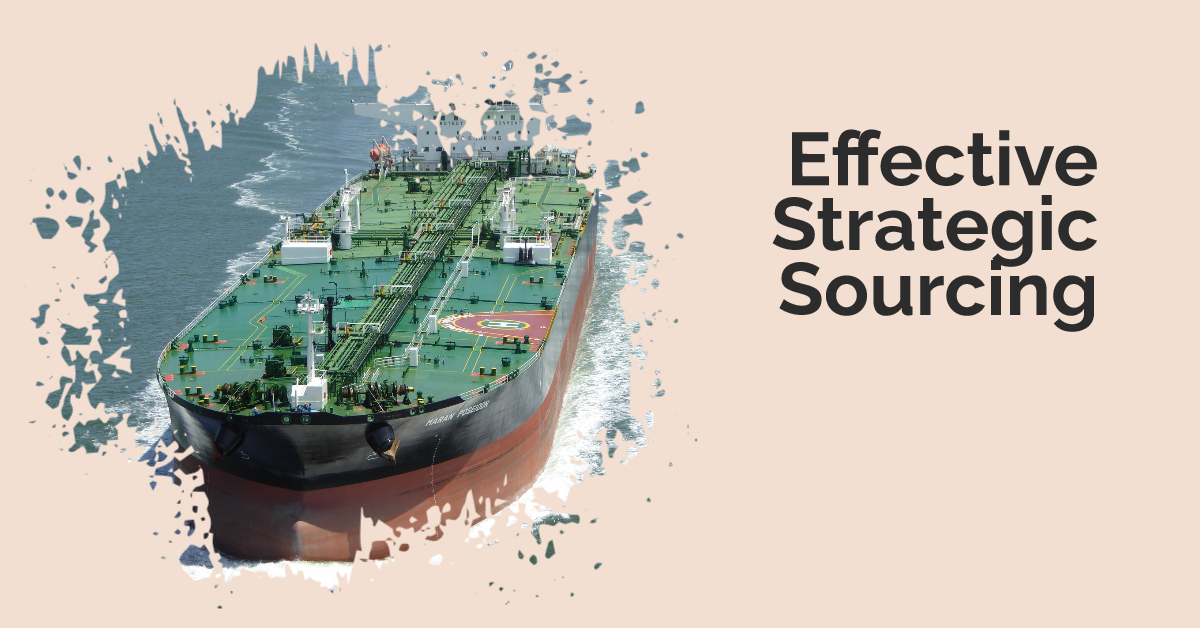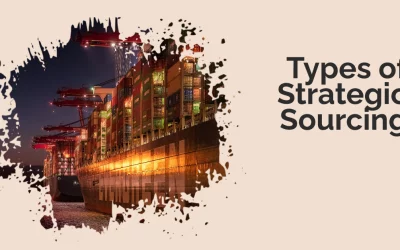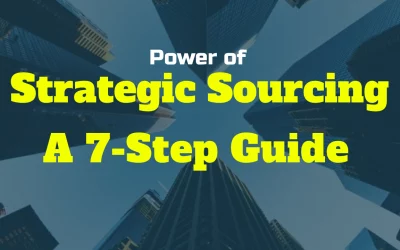Welcome to our comprehensive guide on effective strategic sourcing, where we will explore how it can be a game-changer for your business. Strategic sourcing is a process that focuses on identifying and selecting the right suppliers, establishing relationships, and negotiating contracts to meet business goals.
Procurement and supply chain management are key areas where strategic sourcing can have a significant impact. It helps organizations optimize costs, improve supplier relationships, and drive supply chain efficiency.
In this guide, we will delve into the key aspects of strategic sourcing, how it aligns with overall business strategy, and the benefits it can bring to your organization. We will also provide practical tips for developing and implementing a strategic sourcing plan that can drive success and boost performance.
Key Takeaways
- Effective strategic sourcing is crucial for optimizing procurement and supply chain management.
- It involves identifying and selecting the right suppliers, establishing relationships, and negotiating contracts.
- Strategic sourcing can help organizations optimize costs, improve supplier relationships, and drive supply chain efficiency.
- By developing and implementing a strategic sourcing plan, organizations can drive success and boost performance.
- Strategic sourcing aligns with overall business strategy and contributes to sustainable growth.
Understanding Strategic Sourcing and Its Process
At the heart of every effective strategic sourcing plan is a deep understanding of the strategic sourcing process. Put simply, strategic sourcing is a procurement and supply chain process that involves analyzing your organization’s spending and identifying opportunities to optimize costs by reducing waste and improving efficiency.
Strategic sourcing differs from traditional procurement in that it takes a holistic approach. Rather than simply focusing on cost savings, strategic sourcing considers a wide range of factors, including supplier performance, quality, and sustainability. By taking this approach, organizations are better able to align their procurement and supply chain processes with their overall business strategy.
The strategic sourcing process is typically comprised of seven steps, which include:
| Step | Description |
|---|---|
| 1. Internal analysis | Reviewing spending data, identifying opportunities for improvement. |
| 2. Supplier identification | Identifying potential suppliers that meet the organization’s needs. |
| 3. Supplier evaluation | Assessing potential suppliers based on a range of criteria, including quality, sustainability, and cost. |
| 4. Supplier selection | Selecting the most appropriate supplier(s) based on the evaluation results. |
| 5. Contract negotiation | Negotiating contracts with suppliers that align with the organization’s goals and objectives. |
| 6. Implementation | Rolling out the new supplier relationship and monitoring performance. |
| 7. Continuous improvement | Continuously monitoring and improving supplier performance and the overall strategic sourcing process. |
Through the strategic sourcing process, organizations can achieve a range of benefits, including cost optimization, improved supplier performance, and greater transparency and accountability in their procurement and supply chain processes.
In the next section, we will explore these benefits in greater detail and examine how they can drive success in your organization.
The Benefits of Strategic Sourcing
Implementing strategic sourcing in your organization can bring a range of benefits to the table. One of the most notable advantages is gaining a competitive advantage. By sourcing from the right suppliers, organizations can access better quality products, reduce lead times, and improve delivery times. This, in turn, can give businesses a valuable edge over their competitors.
Another benefit of strategic sourcing is the optimization of costs. By identifying strategic suppliers and negotiating favorable terms, organizations can reduce their costs and improve their bottom line. This is particularly important in today’s business environment, where cost optimization is essential for survival and long-term success.
In addition to these benefits, sustainable strategies for procurement are becoming increasingly crucial for organizations. By engaging in sustainable practices, businesses can demonstrate their commitment to ethical, social, and environmental responsibility. This, in turn, can boost their reputation, improve customer loyalty, and drive long-term success.
By implementing strategic sourcing and its associated sustainable strategies, organizations can unlock the full potential of their procurement processes. This can provide businesses with a range of benefits, including competitive advantage, optimized costs, and improved sustainability.
Developing a Strategic Sourcing Plan
When developing a strategic sourcing plan, it’s important to identify strategic suppliers and set clear goals and objectives. By doing so, we can ensure that our sourcing strategy aligns with our overall business strategy and drives success.
First, we need to identify strategic suppliers who can provide us with the goods and services we need to stay competitive. These suppliers should align with our values and goals and be committed to building a long-term relationship with us.
Once we’ve identified our strategic suppliers, we can set goals and objectives that align with our overall business strategy. These goals should be specific, measurable, achievable, relevant, and time-bound. For example, we may set a goal to reduce our procurement costs by 10% in the next fiscal year.
With our strategic suppliers and goals in place, we can start developing our sourcing strategy. We need to consider factors such as cost, quality, and delivery time when selecting suppliers. Additionally, we need to establish strong relationships with our suppliers to ensure that we can work together effectively and achieve our goals.
By developing a strong sourcing plan, we can ensure that our procurement process is efficient, effective, and aligned with our business strategy.
Implementing Strategic Sourcing in Your Organization
Implementing strategic sourcing in your organization can help you optimize costs, increase efficiency and drive success. Here, we offer practical tips for making the transition to strategic sourcing:
Evaluate and Select the Right Suppliers
When implementing strategic sourcing, it’s important to evaluate your current suppliers and determine whether they align with your sourcing strategy. Look for alternative suppliers that can offer better quality, pricing and delivery times. Use performance metrics to evaluate suppliers and select those that are aligned with your business goals.
Establish Mutually Beneficial Relationships
Building strong relationships with suppliers is essential to the success of strategic sourcing. Establish open and transparent communication channels to foster a partnership-based relationship. When both parties are working towards a common goal, it’s easier to resolve issues and find mutually beneficial solutions.
Adapt to Market Changes
The market is constantly changing, so your sourcing strategy should be flexible enough to adapt. Monitor market trends and be proactive in identifying potential risks and opportunities. Having a contingency plan in place can help mitigate risks and ensure business continuity.
Make Your Procurement Process Efficient and Effective
Implementing strategic sourcing can streamline your procurement process, making it more efficient and effective. Use technology solutions to automate routine tasks, improve data analysis and reduce manual errors.
By following these tips, you can successfully implement strategic sourcing in your organization, increase efficiency, and drive success.
Supplier Performance Management and Continuous Improvement
At the heart of strategic sourcing is the need for effective supplier performance management. Without this critical component, organizations cannot hope to achieve their procurement and supply chain objectives. It is essential to monitor supplier performance regularly to identify areas for improvement and to encourage continuous improvement in supplier processes and practices.
Continuous improvement is a key aspect of supplier performance management and strategic sourcing. It involves a commitment to ongoing analysis and evaluation of supplier processes, seeking ways to increase efficiency and reduce costs. By routinely reviewing supplier performance and identifying opportunities for improvement, organizations can drive cost savings and increase overall performance.
When it comes to supplier performance management, the use of performance metrics is crucial. A well-defined set of metrics allows organizations to evaluate supplier performance consistently and objectively. These metrics can be used to identify areas for improvement, track progress towards goals, and facilitate data-driven decision-making.
In addition to supplier performance management, fostering a culture of continuous improvement is critical to the success of strategic sourcing. This involves setting goals for improvement, promoting communication and collaboration among team members and suppliers, and regularly evaluating and adjusting processes to ensure optimal performance.
| Benefits of Supplier Performance Management and Continuous Improvement |
|---|
| Reduction of costs through increased efficiency and optimized supplier performance |
| Identification and resolution of supplier performance issues, reducing the risk of supply chain disruptions |
| Improved supplier relationships through clear communication and collaboration |
| Enhanced data analysis and decision-making capabilities through the use of performance metrics |
By prioritizing supplier performance management and continuous improvement, organizations can achieve greater success in strategic sourcing. Continuous improvement becomes part of the organizational culture, facilitating productivity, and reducing costs to ensure long-term success.
The Role of Technology in Strategic Sourcing
Technology plays a vital role in strategic sourcing, offering procurement professionals the tools they need to optimize costs, improve supplier relationships, and encourage ethical business practices. By leveraging technology solutions, organizations can streamline processes, improve data analysis, and enhance decision-making.
One of the key advantages of technology in strategic sourcing is its ability to help procurement professionals identify alternative suppliers quickly. With vast amounts of data available at their fingertips, purchasing managers can assess supplier performance against various metrics quickly. As a result, they can make well-informed decisions about which suppliers to use, depending on the specific requirements of the organization.
Technology can also help procurement professionals establish efficient and effective workflows, automating routine tasks and freeing up time to focus on more strategic initiatives. For example, procurement professionals can use technology solutions to manage contracts, automate purchase orders, and track inventory levels, ensuring that they always have the right products and services available when they need them.
In addition to improving operational efficiency, technology can also help organizations encourage ethical business practices. By using technology solutions to monitor supplier compliance, organizations can ensure that suppliers meet their ethical sourcing standards.
Finally, technology can help procurement professionals optimize costs by providing real-time visibility into supplier performance. With this data, organizations can negotiate better deals with suppliers and reduce their overall procurement costs.
At our organization, we understand the importance of technology in strategic sourcing. We leverage cutting-edge solutions to streamline our procurement processes, optimize costs, and foster strong supplier relationships. By staying on top of emerging trends and best practices, we remain at the forefront of strategic sourcing, driving success for our organization and our clients.
The Role of Effective Strategic Sourcing in Driving Performance with Sustainable Strategies
At this point, we hope you have gained a deeper understanding of effective strategic sourcing and its importance in procurement and supply chain management. As we have discussed, strategic sourcing can bring numerous benefits to your organization: from gaining a competitive advantage to optimizing costs and encouraging ethical business practices.
However, achieving these benefits requires more than just a theoretical understanding of strategic sourcing. To truly drive performance and achieve success in your supply chain management, you need to put your knowledge into action.
That’s where business strategy and supplier relationships come in. By developing a comprehensive strategic sourcing plan and building strong relationships with strategic suppliers, you can ensure that your sourcing efforts align with your overall business strategy and drive success in the long run.
Driving Performance with Sustainable Strategies
One of the key components of effective strategic sourcing is sustainability. By implementing sustainable strategies in your procurement process, you can not only reduce costs but also drive performance in the long run.
For example, by working with suppliers who prioritize sustainability and ethical business practices, you can build a more resilient supply chain that is less susceptible to disruptions. This, in turn, can help you avoid costly delays and ensure that your products or services remain competitive in the market.
Moreover, implementing sustainable strategies can also help you reduce waste, conserve resources, and minimize your environmental footprint. This not only benefits your bottom line but also aligns with the expectations of consumers and stakeholders who increasingly prioritize sustainability and corporate responsibility.
Building Strong Supplier Relationships
Effective strategic sourcing also requires building strong relationships with strategic suppliers. By working collaboratively with suppliers, you can ensure that your sourcing efforts are efficient and effective.
Moreover, building strong supplier relationships can also help you identify new opportunities for innovation and growth. By leveraging the expertise and capabilities of your suppliers, you can develop new products or services that meet the changing needs of your customers and keep your business ahead of the curve.
Conclusion
Effective strategic sourcing is a critical aspect of modern business strategy. By driving performance with sustainable strategies and building strong supplier relationships, organizations can ensure that their sourcing efforts align with their overall business strategy and drive success in the long run.
At the end of the day, mastering the art of strategic sourcing requires continuous improvement, adaptation, and a willingness to embrace change. We hope that this guide has provided you with the knowledge and inspiration to take your sourcing efforts to the next level. Here’s to your continued success!
FAQ
What is strategic sourcing?
Strategic sourcing is a procurement process that involves carefully selecting suppliers and optimizing the procurement process to achieve business goals and drive success. It focuses on long-term relationships with suppliers, cost savings, and aligning procurement strategies with overall business strategy.
How is strategic sourcing different from traditional procurement?
Strategic sourcing differs from traditional procurement by taking a more holistic approach. It involves considering factors beyond just price, such as supplier capabilities, quality, and the potential for long-term partnerships. Strategic sourcing also involves analyzing the entire supply chain to optimize costs and improve overall efficiency.
What are the benefits of implementing strategic sourcing?
Implementing strategic sourcing can provide various benefits to organizations. It can help gain a competitive advantage, optimize costs through efficient procurement processes, encourage ethical business practices, and promote sustainable strategies. Strategic sourcing also allows organizations to build strong relationships with suppliers, leading to long-term success.
How do I develop a strategic sourcing plan?
Developing a strategic sourcing plan involves identifying strategic suppliers, setting clear goals and objectives, and developing a sourcing strategy that aligns with your business goals. It is essential to conduct thorough market research, analyze supplier capabilities, and build strong relationships with suppliers to drive success.
How can I implement strategic sourcing in my organization?
To implement strategic sourcing, evaluate and select the right suppliers, establish mutually beneficial relationships, and adapt to market changes. It is crucial to consider alternative suppliers, evaluate their performance, and continuously improve the procurement process. Strategic sourcing can make your procurement process more efficient and effective.
Why is supplier performance management important?
Supplier performance management is essential to ensure the quality and reliability of suppliers. Monitoring supplier performance, implementing performance metrics, and fostering a culture of continuous improvement can help organizations reduce costs, drive success, and maintain strong supplier relationships.
What role does technology play in strategic sourcing?
Technology plays a vital role in strategic sourcing by optimizing costs, encouraging ethical business practices, and improving data analysis and decision-making. By leveraging technology solutions, organizations can streamline procurement processes, improve supply chain visibility, and enhance overall efficiency.
How can strategic sourcing drive performance in my business?
By implementing sustainable strategies, developing strong relationships with suppliers, and leveraging technology, strategic sourcing can drive performance in your business. It optimizes costs, improves supplier management, and aligns procurement strategies with overall business strategy, ultimately leading to success in supply chain management.






0 Comments